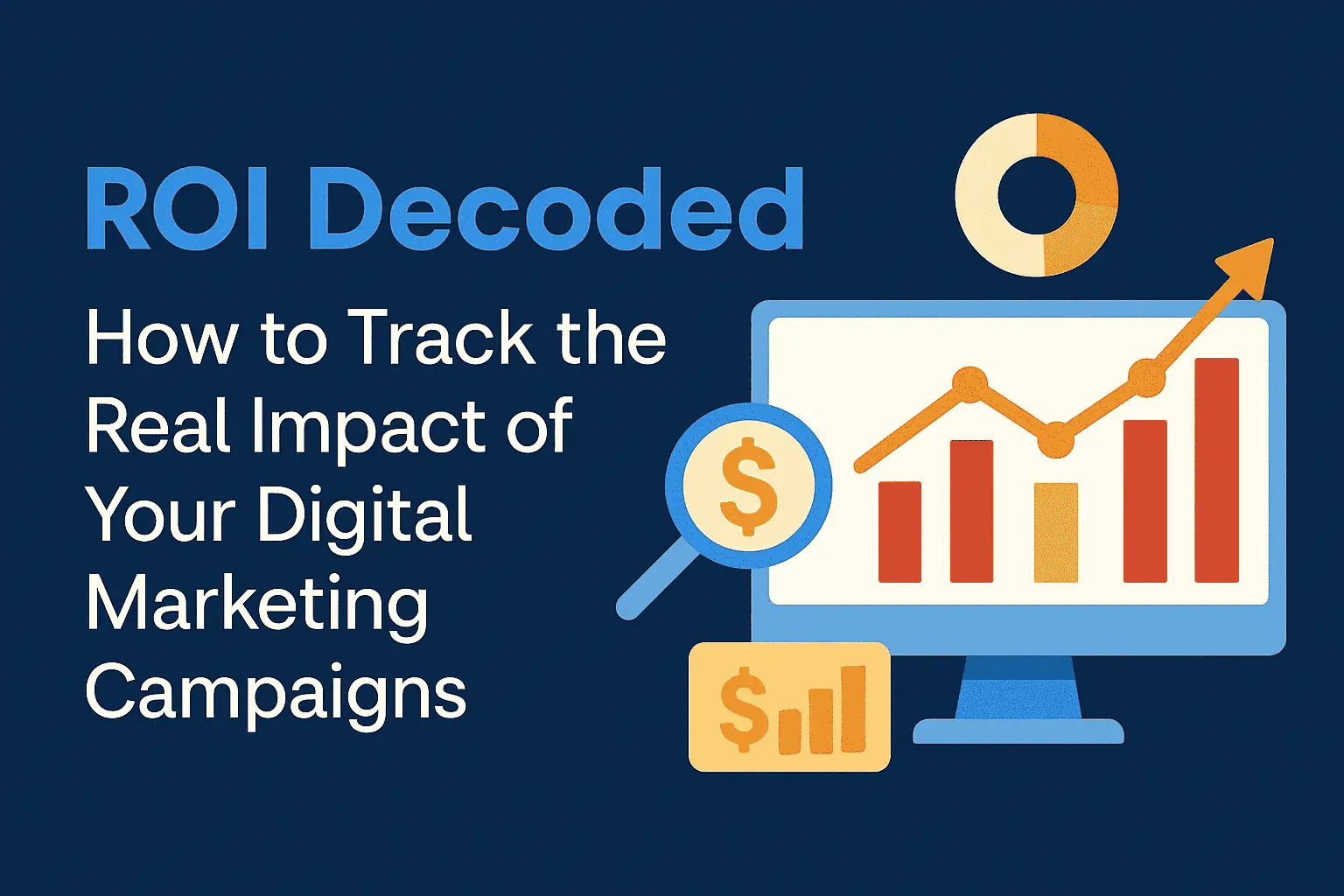Running a digital marketing campaign is great — but knowing whether it actually worked is even more important. That’s where ROI (Return on Investment) comes in. Tracking ROI helps you understand what’s paying off, what’s wasting your budget, and where you should invest more for better results.
Here’s a simple, practical guide on how to track ROI effectively for any digital marketing campaign.
🎯 1. Start With Clear, Measurable Goals
You can’t track ROI without knowing what success looks like.
Brief Points:
- Define the purpose: leads, sales, website traffic, sign-ups
- Set measurable KPIs (Key Performance Indicators)
- Align goals with your marketing and business objectives
👉 Why this matters: Clear goals make ROI measurable and meaningful.
💰 2. Know Your Total Campaign Investment
ROI begins with understanding what you’re spending.
Brief Points:
- Ad spend (Google, Meta, TikTok, etc.)
- Tools/software costs
- Content creation expenses
- Team or freelancer fees
👉 Formula:
ROI = (Return – Investment) / Investment × 100
📈 3. Track Key Performance Metrics
Different campaigns require different metrics.
Important metrics to monitor:
- CPC (Cost per Click)
- CPA (Cost per Acquisition)
- CTR (Click-through Rate)
- Conversion Rate
- Revenue generated
- Customer Lifetime Value (CLV)
👉 Insight: Metrics show if your campaign is moving in the right direction.
🧪 4. Use Analytics Tools to Measure Performance
Tools help you see data clearly and accurately.
Useful Tools:
- Google Analytics (traffic, conversions, sources)
- Meta Ads Manager (ads performance)
- Google Ads Dashboard (keywords, clicks, conversions)
- HubSpot or Zoho CRM (lead tracking & attribution)
👉 Tip: Check data weekly to catch trends early.
🔍 5. Track Conversions With Proper Setup
You need conversion tracking to measure results correctly.
What to set up:
- Google Analytics goals
- Facebook Pixel
- UTM parameters on links
- Custom landing pages
👉 Why it helps: You’ll know exactly which ad, post, or platform produced a lead or sale.
📊 6. Compare Results Against Your Costs
Once you know your revenue and costs, calculating ROI is easy.
Brief Points:
- Evaluate which campaigns deliver the highest return
- Identify low-performing channels
- Reallocate budget to what works best
👉 Smart Move: Keep refining based on actual results — not guesses.
🔄 7. Measure Long-Term ROI Too
Some campaigns don’t pay off immediately — especially brand-building ones.
Track long-term indicators:
- Repeat customers
- Brand awareness growth
- Higher engagement over time
- Customer lifetime value
👉 Key Point: Long-term ROI often provides the biggest payout.
📌 8. Create ROI Reports Monthly
To stay consistent, create simple monthly ROI summaries.
What to include:
- Total spend
- Total revenue
- Key metrics (CPC, CTR, CPA, etc.)
- Top-performing channels
- Recommendations for next month
👉 Benefit: Clear reporting = better decision-making.
🎉 Final Thoughts
Tracking ROI doesn’t need to be complicated. With the right goals, proper tracking tools, and consistent analysis, you can easily identify which digital marketing efforts bring real value — and which ones need improvement.
ROI gives you clarity, direction, and confidence to invest smarter.
The more you track, the stronger your marketing strategy becomes.
